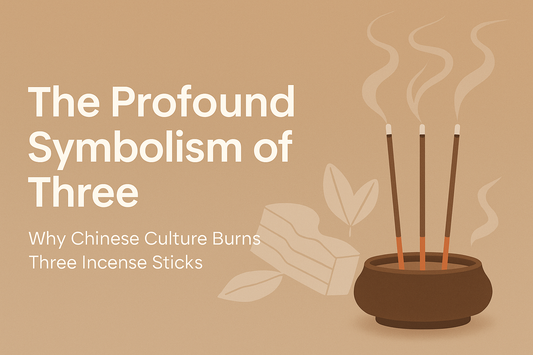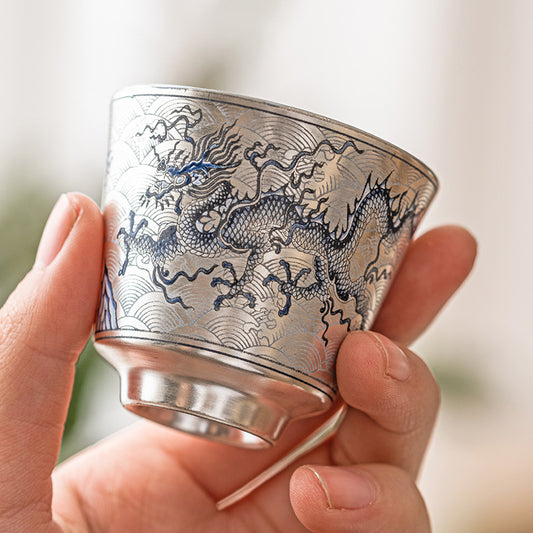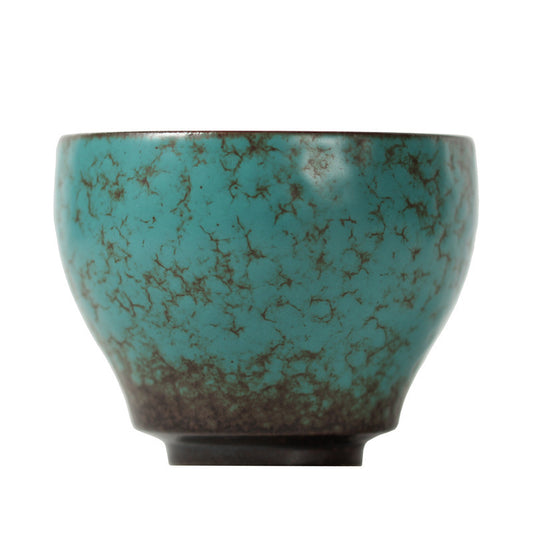
Why Do You Sometimes Feel Dizzy When Burning Incense Sticks?
Why Do You Sometimes Feel Dizzy When Burning Incense Sticks? - Natural Incense Guide
Greetings, fellow fragrance enthusiasts! Chris Chen here, from Monian. We all cherish the calming ritual of lighting an incense stick, letting its gentle smoke waft through our space, creating an atmosphere of peace and tranquility. But what if, instead of serenity, you sometimes experience an unwelcome guest: a sudden wave of dizziness, a headache, or even a touch of nausea? It's a perplexing experience, one that can turn a moment of calm into discomfort. So, why does this happen? And more importantly, how can we ensure our pursuit of fragrant harmony doesn't come at the cost of our well-being? Today, we're going to delve into the science behind this phenomenon and discover why choosing natural incense sticks isn't just a preference, but a vital step towards a healthier, more harmonious aromatic experience.
The Science Behind the Spin: Why Incense Can Make You Dizzy
When you light an incense stick, you're initiating a process of combustion, and like any burning material, it releases various compounds into the air. While the fragrant plumes are often what we focus on, it's the invisible components that can sometimes lead to that unsettling feeling of dizziness. Let's break down the primary culprits:
Carbon Monoxide (CO) Exposure: The Silent Intruder
One of the most significant concerns with burning any material indoors, including incense, is the potential for carbon monoxide (CO) production. Carbon monoxide is a colorless, odorless gas that results from incomplete combustion. When inhaled, CO binds to hemoglobin in your red blood cells, preventing them from carrying oxygen effectively to your organs and tissues, including your brain [1]. Even at low concentrations, this oxygen deprivation can manifest as headaches, fatigue, and, yes, that disorienting feeling of dizziness. Poor ventilation in a room can quickly lead to a buildup of CO, exacerbating these symptoms. Think of it like a car idling in a closed garage – the fumes build up, and the consequences can be severe.
Volatile Organic Compounds (VOCs): The Invisible Irritants
Incense smoke is a complex mixture containing a variety of Volatile Organic Compounds (VOCs). These are organic chemicals that have a high vapor pressure at room temperature, meaning they easily evaporate into the air. Common VOCs found in incense smoke include benzene, formaldehyde, and toluene [2]. While some VOCs contribute to the pleasant aroma, others are known irritants. Exposure to these compounds can irritate your respiratory system, eyes, and skin. More importantly, certain VOCs can also affect your central nervous system, leading to symptoms like headaches, nausea, and dizziness. The concentration of these compounds can vary widely depending on the type and quality of the incense, as well as the ventilation in the burning environment.
Synthetic Fragrances: The Chemical Cocktail
Here's where many conventional incense sticks fall short. To achieve strong or specific scents, many manufacturers use synthetic fragrances. These artificial chemicals often contain phthalates, parabens, and other compounds that are not derived from natural sources [3]. While they might smell appealing, these synthetic ingredients can be particularly problematic for sensitive individuals. Exposure to synthetic fragrances has been linked to a range of adverse health effects, including respiratory issues, skin irritations, and neurological symptoms such as brain fog, headaches, and dizziness [4]. Your body might be reacting to these artificial compounds, perceiving them as foreign invaders, leading to an inflammatory response or direct neurotoxic effects.
Poor Ventilation: The Concentration Factor
Regardless of the incense type, inadequate ventilation is a major contributing factor to dizziness. When incense is burned in a closed or poorly ventilated space, pollutants like CO and VOCs accumulate rapidly. This increased concentration means you're inhaling more of these potentially harmful substances, intensifying their effects. Proper airflow is crucial to disperse the smoke and ensure a healthy breathing environment. Without it, even the purest incense can lead to discomfort if the air quality deteriorates significantly.
The Hidden Dangers of Conventional Incense
Now that we understand the scientific reasons behind the dizziness, let's talk about why conventional, often mass-produced, incense sticks can be particularly problematic. It's not just about the smoke itself, but what's in that smoke. Many commercial incense products prioritize cost-effectiveness and strong, consistent scents over purity and health. This often translates to a cocktail of questionable ingredients:
Synthetic Fragrances and Artificial Scents
As mentioned earlier, synthetic fragrances are a major red flag. These are chemically manufactured scents designed to mimic natural aromas or create entirely new ones. They are cheap to produce and offer a wide range of scent profiles, which is why they are so prevalent in conventional incense. However, these artificial compounds can release a multitude of VOCs, including phthalates, which are known endocrine disruptors, and other chemicals that can trigger allergic reactions, respiratory issues, and neurological symptoms like headaches and dizziness [5]. Unlike natural essential oils, which are complex mixtures of naturally occurring compounds, synthetic fragrances are often simpler chemical structures that your body may not recognize or process effectively, leading to adverse reactions.
Chemical Binders and Fillers
To hold the incense stick together and ensure a consistent burn, conventional incense often relies on chemical binders and fillers. These can include various glues, resins, and even charcoal powder. When burned, these binders and fillers can release additional particulate matter and harmful chemicals into the air. Charcoal, for instance, is often used as a base because it burns consistently and produces a lot of smoke, but it also contributes significantly to carbon monoxide and particulate matter emissions [6]. These additives contribute to the overall toxic load in the air, increasing the likelihood of discomfort and health issues.
Lack of Regulation and Transparency
One of the most concerning aspects of the conventional incense industry is the general lack of stringent regulation regarding ingredients and emissions. Unlike food or pharmaceuticals, there are often no mandatory requirements for manufacturers to disclose all ingredients or to test for specific pollutants. This lack of transparency means that consumers are often left in the dark about what they are truly inhaling. Without proper oversight, it's easy for manufacturers to use cheaper, potentially harmful ingredients, leading to a product that might smell good but is detrimental to your health. This is why it's crucial to be an informed consumer and seek out brands that prioritize purity and transparency.
The Natural Alternative: A Breath of Fresh Air
So, if conventional incense can be problematic, what's the solution? The answer lies in embracing the purity and wisdom of nature: natural incense sticks. These are crafted from pure, unadulterated plant materials, harkening back to the ancient traditions where incense was revered for its inherent aromatic and therapeutic properties. When you choose natural incense, you're not just selecting a product; you're opting for a cleaner, healthier, and more authentic aromatic experience.
What is Natural Incense?
Natural incense is fundamentally different from its synthetic counterparts. It is typically made from a blend of finely ground wood powders (like sandalwood, agarwood, or cedar), resins (such as frankincense, myrrh, or copal), and pure essential oils derived directly from plants. The binding agents are also natural, often derived from plant-based gums or water. This means that when you burn all natural incense, you are primarily inhaling the aromatic compounds released by these pure botanical ingredients, rather than a cocktail of synthetic chemicals and fillers [7]. The absence of artificial fragrances, charcoal, and chemical binders significantly reduces the emission of harmful VOCs and particulate matter, leading to a much cleaner burn.
Benefits of Natural Incense: Beyond Just Scent
The advantages of opting for natural incense extend far beyond simply avoiding dizziness. They offer a holistic range of benefits that contribute to your overall well-being:
Cleaner Burn, Fewer Harmful Chemicals: Because natural incense is free from synthetic additives, it produces significantly less harmful smoke and fewer toxic byproducts. This means a reduced risk of respiratory irritation, headaches, and dizziness, allowing you to enjoy the fragrance without discomfort.
Authentic Aromatherapy Benefits: The essential oils and resins in natural incense retain their inherent therapeutic properties. For centuries, these botanicals have been used in traditional medicine and spiritual practices for their ability to calm the mind, reduce stress, improve focus, and uplift the spirit [8]. For example, sandalwood is known for its grounding and meditative qualities, while frankincense is often used for spiritual connection and purification.
Enhanced Well-being and Mindfulness: The act of lighting handmade incense and experiencing its natural aroma can be a powerful tool for mindfulness and relaxation. It creates a serene atmosphere conducive to meditation, yoga, or simply unwinding after a long day. The subtle, evolving fragrance encourages deeper breathing and a heightened sense of presence, helping to alleviate anxiety and promote a sense of inner peace.
Spiritual Connection and Ritual: For many, incense burning is a sacred practice. Natural incense, with its connection to ancient traditions and pure botanical origins, enhances this spiritual dimension. It allows for a more authentic and respectful engagement with rituals, whether personal or communal, fostering a deeper sense of connection to heritage and higher purpose.
Natural Air Purification (with proper ventilation): While not a substitute for air purifiers, certain natural ingredients in incense, like specific resins, have been traditionally used for their antimicrobial properties, contributing to a sense of freshness in the environment. However, it is crucial to emphasize that proper ventilation is always necessary to ensure any smoke is adequately dispersed.
Choosing Wisely: What to Look for in Natural Incense Sticks
Navigating the world of incense can be daunting, especially with so many options available. But armed with knowledge, you can make informed choices that prioritize your health and well-being. Here's what to look for when selecting natural incense sticks:
Ingredient Transparency: A reputable brand will be transparent about its ingredients. Look for a clear list that specifies natural botanicals like wood powders (sandalwood, agarwood, cedar), resins (frankincense, myrrh), and pure essential oils. Avoid products with vague terms like "fragrance," "perfume," or "aroma," as these often mask synthetic components.
No Synthetic Fragrances or Dyes: This is paramount. Ensure the product explicitly states "no synthetic fragrances," "no artificial dyes," or "100% natural." If it doesn't, it's best to assume it contains artificial additives.
Natural Binders: Inquire about the binders used. Natural incense typically uses plant-based gums (like Litsea glutinosa or makko powder) that burn cleanly and don't release harmful chemicals.
Reputable Source: Purchase from trusted brands that specialize in natural and traditional incense. Read reviews and look for certifications if available. A brand that is transparent about its sourcing and manufacturing processes is a good sign.
Handmade Incense: Often, handmade incense indicates a higher level of care and attention to natural ingredients. Artisans who craft incense by hand are typically more committed to traditional methods and pure formulations.
Conclusion: Embrace the Pure Fragrance
The occasional dizziness you experience from burning incense isn't a sign that you're sensitive to all incense, but rather a strong indicator that the incense you're using might contain hidden culprits. By understanding the science behind these reactions and making a conscious switch to natural incense sticks, you can transform your aromatic experience from one of potential discomfort to one of pure, unadulterated bliss. Embrace the wisdom of nature, choose transparency, and let the authentic fragrances of the earth fill your space, enhancing your well-being without compromise. Your body (and your head) will thank you for it.
Explore Our Collection of Natural Incense Sticks
Ready to experience the difference? Discover Monian's curated selection of all-natural, handmade incense sticks, crafted with purity and your well-being in mind.
Shop Natural IncenseReferences
- [1] Carbon Monoxide Poisoning: A Review of the Pathophysiology, Clinical Presentation, and Treatment
- [2] Volatile organic compounds (VOCs) in incense smoke: A review
- [3] The Dangers of Synthetic Fragrances - Suntribe
- [4] Health Effects of Fragrance Exposure - PMC
- [5] Dangers of Synthetic Fragrance and 6 Studies to Back It Up - Tangie
- [6] Incense, Ritual, Health Effects, and Prudence - Cambridge Core
- [7] Is Burning Incense Bad For You? - Kin Objects
- [8] The Hidden Benefits of Using Incense Daily - Heazz




















